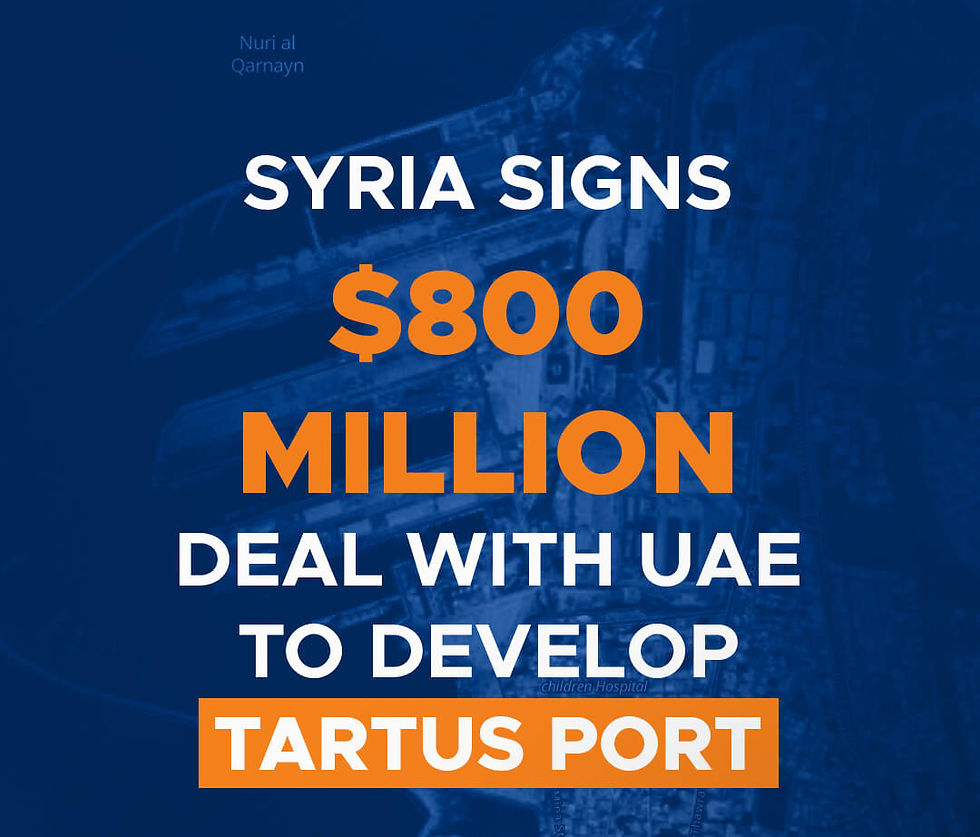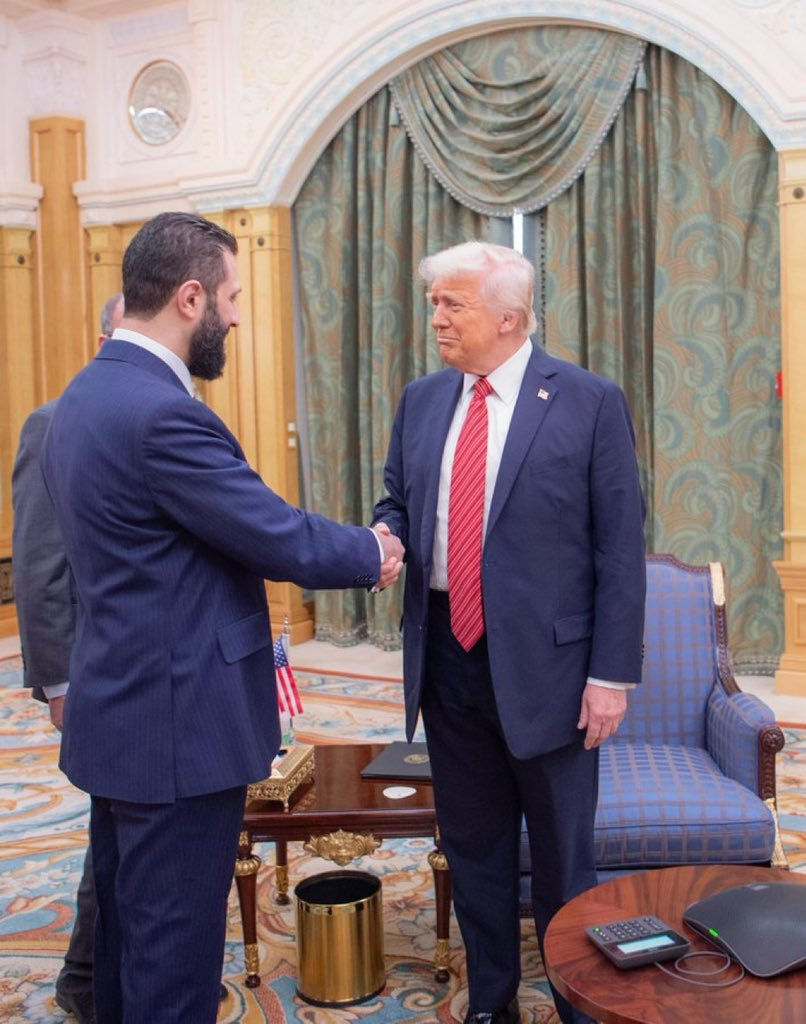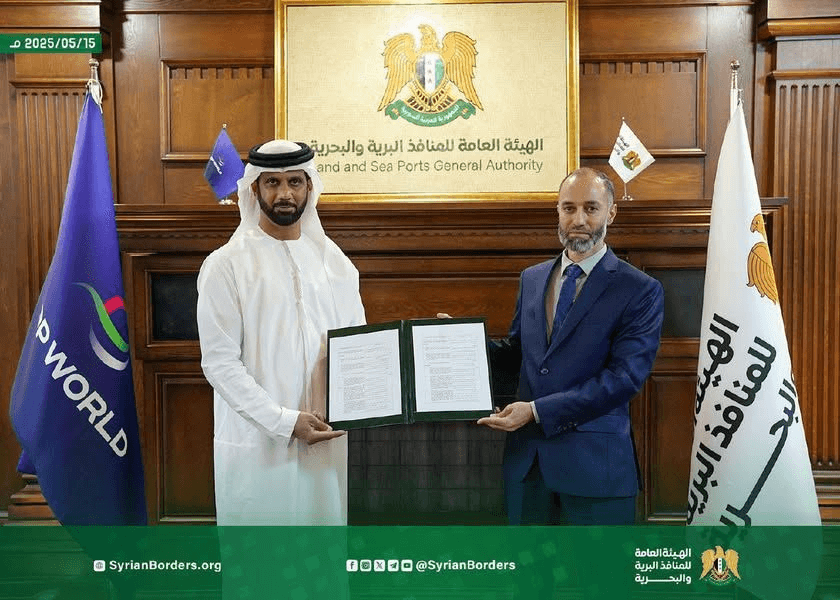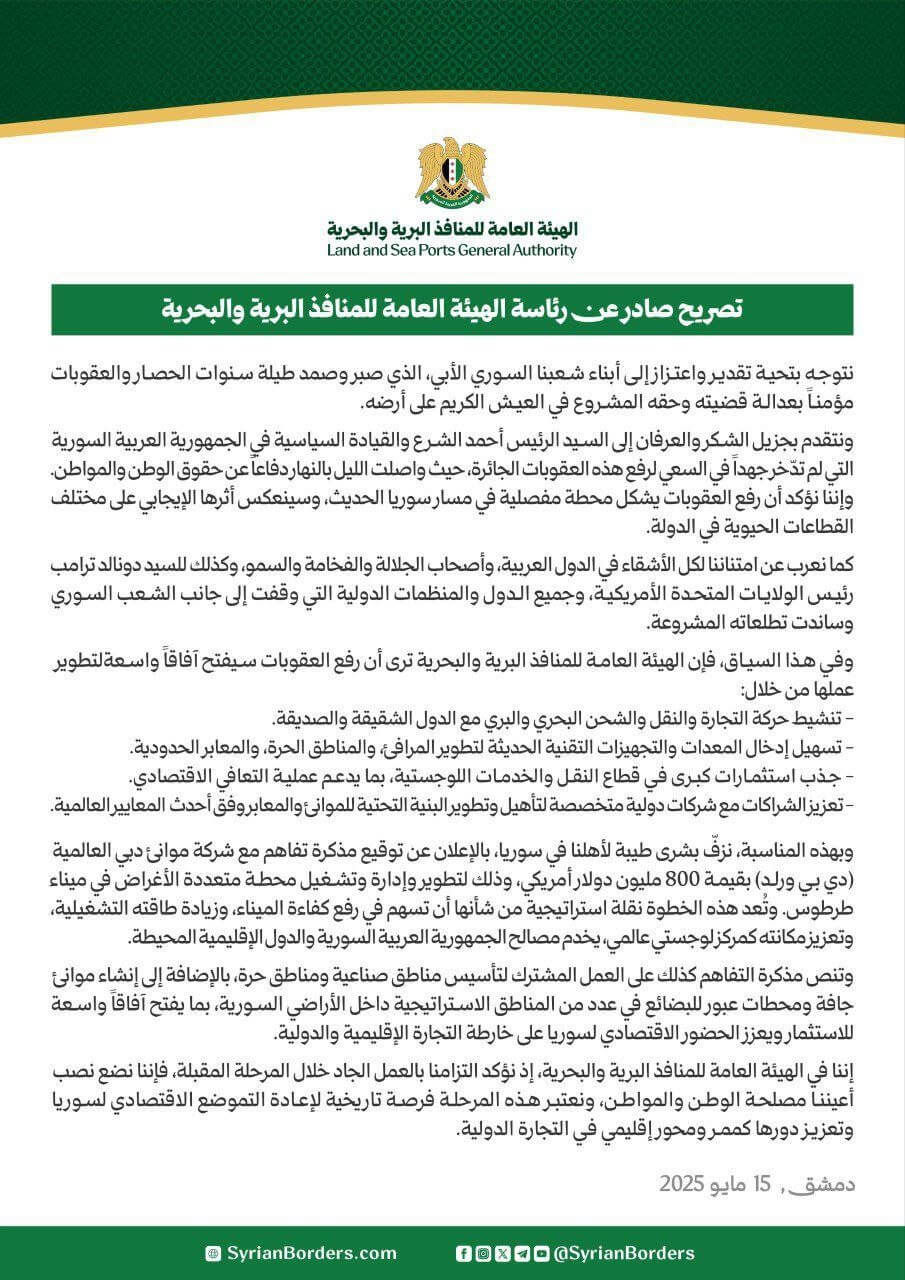Commercial Intrusion or Geopolitical Trap? Russia’s Tartus Base Under Silent Pressure"
- RFN- OS
- May 21
- 2 min read
Updated: May 27

U.S. Sanctions Eased to Enable Emirati Entry

On May 14, 2025, U.S. President Donald Trump described his meeting with Syrian President Ahmad Al-Sharaa in Saudi Arabia as "great," referring to him as a "real leader." This high-level diplomatic engagement resulted in the partial easing of U.S. sanctions on Syria, with a focus on revitalizing infrastructure, port operations, and trade.
Key measures included the issuance of General License No. 24 (GL 24), authorizing limited engagement with Syrian state entities, and the removal of restrictions on:
Foreign investment in infrastructure, transport, and logistics
Transactions related to energy (oil, gas, electricity) for civilian use
Non-commercial remittances via the Central Bank of Syria
Import/export of petroleum-related equipment and materials
Commercial port development and management agreements

These moves directly facilitated a landmark $800 million Memorandum of Understanding between the Syrian government and DP World, the Dubai-based logistics giant, for the modernization and commercial expansion of the Port of Tartus.
(Source: economymiddleeast)
DP World at Tartus: Civilian Investment, Military Repercussions
The agreement, announced on May 16, 2025, includes the operation of a multi-purpose terminal and the development of industrial and free trade zones along Syria’s Mediterranean coast. While officially presented as a civilian infrastructure project, the military implications are significant—especially for the Russian Federation.
Tartus has served as Russia’s only naval facility in the Mediterranean since Soviet times. The base enables strategic reach into the Middle East, North Africa, and Southern Europe, and has been vital to Russian military logistics throughout the Syrian conflict.
However, DP World's entry may mark a strategic reorientation of the port. The growth of civilian maritime traffic, infrastructure control by a foreign commercial entity, and international regulatory compliance could complicate Russian naval operations, particularly in:
Berthing and logistical prioritization
Movement secrecy and operational discretion
Security zoning and access control
Strategic Rebalancing or Calculated Containment?
While no formal restrictions have been imposed on Russian access, analysts interpret the deal as a calculated geopolitical realignment. Syria’s engagement with Gulf partners—particularly the UAE—represents a soft shift from exclusive Russian military reliance toward diversified economic partnerships. This gives Abu Dhabi de facto influence over a strategic asset within Russia’s Mediterranean footprint.
The civilianization of Tartus, if sustained, could act as a passive containment mechanism—limiting Russia’s ability to project naval power without direct confrontation.
Outlook: Erosion by Infrastructure
In the long term, increased foreign investment and commercial oversight at Tartus may undermine its value as a dual-use facility. While Moscow is unlikely to relinquish its position, its freedom of maneuver may be eroded by port modernization projects that prioritize trade over military throughput.
Conclusion: Strategic Access Under Pressure
The transformation of Tartus under DP World’s management represents more than just an infrastructure upgrade—it is a subtle but significant shift in regional maritime dynamics. For the Russian Navy, the port’s evolving role may result in operational friction, reduced exclusivity, and diminished strategic depth in the Eastern Mediterranean.
Without firing a shot, Syria’s new economic direction—backed by Gulf capital and tacit U.S. support—may gradually redefine the balance of influence along one of Russia’s most critical maritime corridors.



Comments